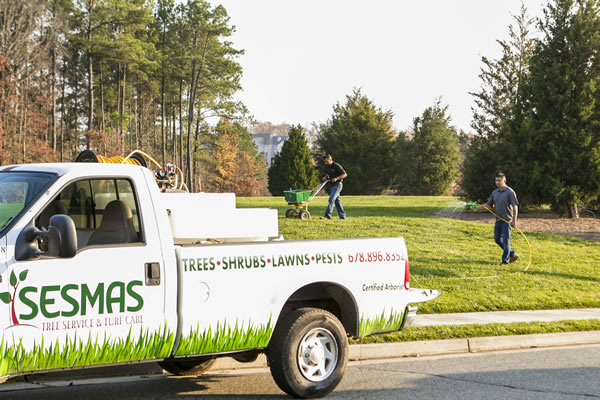Recommended Lawn Mowing Heights by Season
Who does not want a lush, healthy and vibrant lawn? We all want to have a beautiful lawn that is appealing to the eyes and the feet, but how can we get that? While there are a range of maintenance items necessary for lush grass, we are going to focus on lawn mowing heights. At Sesmas Tree Service in Atlanta, we have years of experience dealing with grass and one thing is for certain: there is no one-size-fits-all solution to this.
Cut your grass too short and you might have weeds invade the territory while the grass experiences heat damage. Let it grow too long and you might find that insects, snakes, and other critters have made their home there. There are a variety of ideal heights to cut your grass and it depends on the grass type, its health condition, and the season. To begin, lets talk about some of the different types of grass out there.
Grass Type
Different grass types have specific and unique needs just as we all have different needs. So, before we delve into ideal mowing heights, lets get a quick understanding of the grass types. For the sake of keeping things simple, we will divide grasses into cool season grasses and warm season grasses.
Cool season grasses are generally found in colder climate areas such as the Northeast, Midwest, or Pacific Northwest region of the United States. These include grass types such as bluegrass, perennial ryegrass, or creeping bent grass.
Warm season grasses are, unsurprisingly, found in the warmer Southern and Southwestern areas of the United States. Common grasses in these areas include bermudagrass, centipedegrass, and zoysiagrass.
This is not to say that warm season grasses cannot be found in cooler areas, or vice versa. If you live in the South but want cool season grasses, then you can have that so long as you keep up with the necessary maintenance. Granted, they will grow better in their respective environment.
Spring Cutting
After dodging the harsh winter, your grass likely suffered some winter burns and other damage, but spring brings life. Cool season grasses should be mowed down to a height of 3 inches while warm season grasses will be brought down to half an inch to 1.5 inches.
Mowing in The Summer
The summertime brings high temperatures and extreme sun exposure that can drain moisture from soil. Therefore, grass heights must go up with the temperature to allow the taller grass to shade the lawns soil. During the summertime, you can allow the grass to grow an extra inch taller. So, cool season grasses can grow to about 3.5 inches while warm season grasses round out at about 2 to 2.5 inches.
Cutting Heights in The Fall
With winter right around the corner and temperatures cooling, you want to get your grass to a medium length not too long and not too short. Strike the right balance by allowing cool season grass to remain around 2.5 inches tall while warm season grasses are between 1.5 and 2 inches.
Call the Professionals
If you have any specific questions or concerns, please feel free to call the professionals at Sesmas Tree Service. We are more than happy to send out a certified arborist for assistance. Also consider exploring our website to learn about the services we provide.













